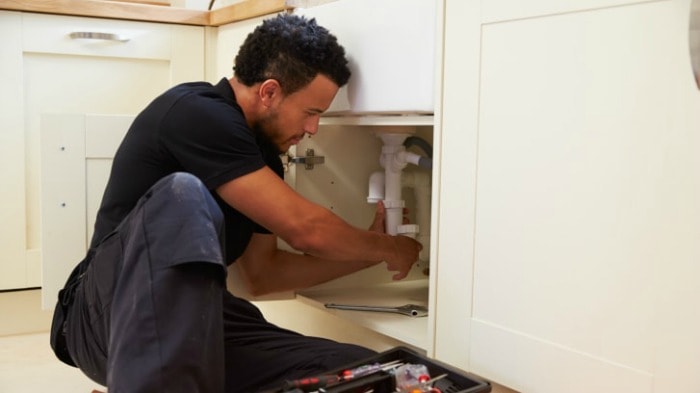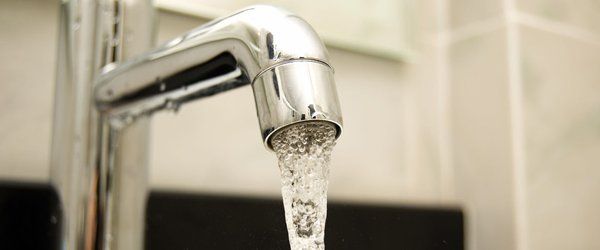Solving Plumbing Issues in Rental Properties: An Easy Guide
Solving Plumbing Issues in Rental Properties: An Easy Guide
Blog Article
We have uncovered this post pertaining to 10 Common Rental Property Repairs down the page on the net and felt it made good sense to share it with you over here.

Handling plumbing issues in rental residential or commercial properties efficiently is critical for maintaining lessee fulfillment and preserving the building's value. Whether you're a proprietor or a home supervisor, recognizing how to deal with these typical issues can conserve you money and time while making certain conformity with legal responsibilities. Here's a step-by-step guide on how to manage pipes problems in rental residential properties.
Develop Clear Interaction
Urge tenants to report any plumbing issues as quickly as they occur. Give several communication channels such as phone, e-mail, or an occupant site to make it simple for them to reach out. Prompt responses to these records can avoid small issues from intensifying into major troubles.
Inform Tenants
Enlighten your renters concerning what constitutes a pipes emergency situation and what does not. Offer standards on how to take care of minor problems themselves, such as using a bettor to unblock a commode. Also, notify them regarding what they need to stay clear of taking down drains pipes to stop obstructions, such as oil, coffee premises, and non-biodegradable things.
Normal Upkeep
Implement a routine maintenance routine for all pipes systems in your leasing residential properties. Normal checks can assist recognize and resolve issues like leaks, slow drains pipes, or rusty pipes before they come to be significant. Take into consideration employing a professional plumbing to examine the properties every year or semi-annually.
Quick Feedback to Emergencies
Have a strategy in place for replying to pipes emergency situations. This should include having the contact information of trustworthy pipes solutions that use 24/7 emergency situation repair services. Quick activity is vital to decrease damages in circumstances like burst pipes or severe leaks.
Document Everything
Maintain thorough documents of all reported pipes problems and the actions required to settle them. Documents must include days, summaries of the problem, interaction with renters, and invoices from service providers or plumbing professionals. This info can be crucial for insurance policy claims, tax obligation deductions, and legal defense.
Use Qualified Professionals
Constantly use accredited and insured professionals for substantial plumbing repairs and installments. This makes sure that the work depends on code and can help prevent liability issues in case of crashes or further damage. It also assures renters that repair work are being taken care of expertly.
Understand Legal Obligations
Recognize your legal responsibilities pertaining to pipes and basic residential property upkeep. A lot of territories call for property managers to guarantee their properties are habitable and that all pipes systems remain in good working order. Failing to attend to significant problems quickly can cause lawsuits from renters.
Occupant Repayments
If a pipes problem needs immediate attention and the renter fixes the issue on their own, have a clear policy in position for reimbursing expenses. Guarantee renters understand they need to obtain previous approval for higher-cost repairs unless it's an outright emergency.
Preventive Upgrades
Take into consideration upgrading older plumbing systems and fixtures to a lot more modern-day, efficient models. This can minimize the regularity and extent of pipes concerns and reduced lasting upkeep prices. It's also a marketing factor for potential renters that value upgrades and modern-day attributes.
Lessee Move-Out Inspections
Conduct comprehensive pipes checks throughout move-out assessments to guarantee that any type of problems are determined and dealt with prior to a brand-new tenant relocate. This protects against conflicts with brand-new renters over pre-existing conditions and makes certain the home remains in leading problem.
Conclusion
Taking care of plumbing issues in rental buildings needs a proactive technique and great interaction with occupants. By remaining on top of maintenance, reacting immediately to emergency situations, and making use of certified professionals, landlords can maintain their properties in excellent condition and maintain good relationships with lessees.
How to Handle Water Damage in a Rental Property
What is Water Damage?
Water damage is harm or destruction caused by water entering areas where it is not supposed to be. It can be caused by a variety of sources and can manifest in different ways. The most common examples of water damage include:
Leaking roof Plumbing leaks Appliance malfunctions Poor drainage Flooding Sewage backup Condensation Tenant negligence HVAC system issues Frozen pipes Is water damage dangerous?
Water damage itself is not inherently dangerous, but it can lead to various hazards and health risks if not promptly and properly addressed. The severity of these risks depends on the extent of the water damage, the source of the water, and how quickly it is mitigated.
Some potential dangers associated with water damage include structural damage, mold and bacterial growth, electrical hazards, water contamination, and pest infestations. In situations where mold and mildew have gone unaddressed, mold can start to develop within 24-48 hours of water exposure, and this can impose a serious health risk to tenants. In particular, mold spores and damp conditions can lead to respiratory issues and even make existing health problems worse, such as allergies, asthma, or immune disorders.
Water Damage in an Apartment - Who is Responsible?
If the water damage is caused by the tenant’s negligence, the tenant is responsible for the cost of repairs. If the water damage is caused by a defect in the property, the landlord is responsible for the cost of repairs. If the water damage is a result of natural causes, such as excessive rain, then the landlord is responsible, since the water intrusion likely occurred due to a defect in the property. Landlord Responsibility water damage in rental property
Since maintaining habitability is the landlord’s legal responsibility, landlords are responsible for any resulting structural damage caused by water damage. These structural damages may include damage to walls, roofs, ceilings, and flooring. If water damage has affected the rental property’s original structure, the landlord is responsible for repairing or replacing those materials. Therefore, landlords should have property insurance that covers the structural components of their rental property so that they can receive help with the costs of covered events.
Preventative measures can also help landlords avoid massive renovations. Preventative maintenance may include conducting regular inspections to identify and address potential water damage before it becomes a major and urgent problem.
If a landlord fails to meet their responsibilities regarding water damage, it can lead to legal disputes and potential liability. Tenants who believe their landlord is not addressing water damage issues in accordance with California law can seek legal advice or contact local housing authorities for assistance.
https://www.goodlifemgmt.com/blog/water-damage-in-a-rental-property/

I was made aware of that article on Plumbing Maintenance and Repair in your Rental Property through a pal on another blog. Those who liked our article kindly do not forget to share it. I treasure reading our article about 10 Common Rental Property Repairs.
Report this page